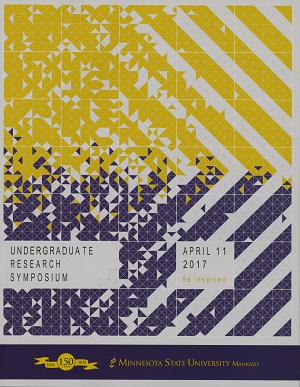Under Pressure: The Nonpartisan League in South Central Minnesota
Location
CSU 203
Start Date
11-4-2017 10:00 AM
End Date
11-4-2017 11:00 AM
Student's Major
History
Student's College
Social and Behavioral Sciences
Mentor's Name
Lori Lahlum
Mentor's Department
History
Mentor's College
Social and Behavioral Sciences
Description
The Nonpartisan League attempted to enter Minnesota in 1918, with Charles Lindbergh, Sr. as the League-endorsed candidate for governor in the Republican primaries. As the League moved into Minnesota in 1917, it hoped to achieve the same success it had in North Dakota. Unfortunately, the United States entered World War I in April of 1917 as the Nonpartisan League began to organize in Minnesota. The League opposed America's entry into the war, but supported the war effort when the United States declared war on Germany. League opponents and much of the general public, however, labeled the Nonpartisan League a disloyal organization. In Minnesota, the League faced its greatest opposition in the south central region, where county officials and citizens prevented League meetings by using terror and intimidation tactics. Many of these actions seem contrary to Minnesota's moralistic political culture, but the national security crisis of World War I caused the moralistic culture of the area to adopt several traits of the traditionalistic political culture. Evidence of this blending of political cultures includes a disdain for outside influence, heightened attention to elite interests, and terror and intimidation tactics. This study analyzes League activity in Blue Earth, Brown, Martin, and Jackson counties, and each provides an explanation as to why the League did not succeed in south central Minnesota. In fact, Lindbergh won just one county in the area, Brown County, and the Nonpartisan League failed to establish a significant political presence in the region.
Under Pressure: The Nonpartisan League in South Central Minnesota
CSU 203
The Nonpartisan League attempted to enter Minnesota in 1918, with Charles Lindbergh, Sr. as the League-endorsed candidate for governor in the Republican primaries. As the League moved into Minnesota in 1917, it hoped to achieve the same success it had in North Dakota. Unfortunately, the United States entered World War I in April of 1917 as the Nonpartisan League began to organize in Minnesota. The League opposed America's entry into the war, but supported the war effort when the United States declared war on Germany. League opponents and much of the general public, however, labeled the Nonpartisan League a disloyal organization. In Minnesota, the League faced its greatest opposition in the south central region, where county officials and citizens prevented League meetings by using terror and intimidation tactics. Many of these actions seem contrary to Minnesota's moralistic political culture, but the national security crisis of World War I caused the moralistic culture of the area to adopt several traits of the traditionalistic political culture. Evidence of this blending of political cultures includes a disdain for outside influence, heightened attention to elite interests, and terror and intimidation tactics. This study analyzes League activity in Blue Earth, Brown, Martin, and Jackson counties, and each provides an explanation as to why the League did not succeed in south central Minnesota. In fact, Lindbergh won just one county in the area, Brown County, and the Nonpartisan League failed to establish a significant political presence in the region.
Recommended Citation
Soucek, Jonathan. "Under Pressure: The Nonpartisan League in South Central Minnesota." Undergraduate Research Symposium, Mankato, MN, April 11, 2017.
https://cornerstone.lib.mnsu.edu/urs/2017/oral-session-03/3



